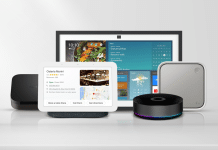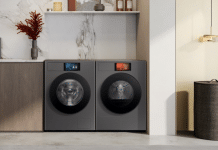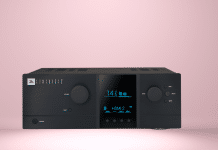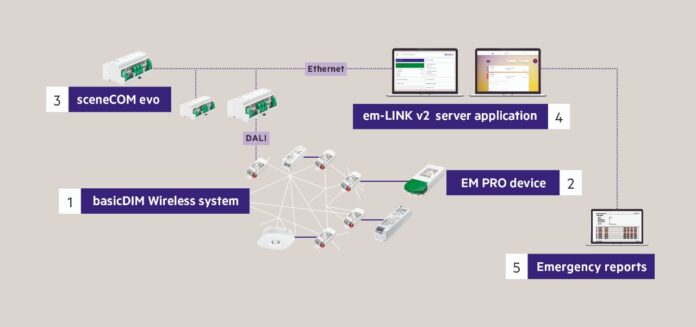
Tridonic offers easy testing and maintenance of existing systems
Dornbirn, April 2021. Modern emergency and safety lighting requires central monitoring and automatic testing of individual luminaires. In the case of existing systems, retrofitting is often difficult as additional wiring is needed for communication. Tridonic can remedy this with its new wireless emergency lighting system. It combines the proven Tridonic technologies of basicDIM Wireless and sceneCOM and is suitable for both renovations and new installations.
In a connected industrial society, a power outage means not only high economic damage but also the risk of accidents. Safety and emergency lighting systems play an important role in building safety. Operating independently of the existing power supply, these systems help people quickly find their way out of the building in an emergency and thus to safety.
Strict maintenance and testing regulations therefore apply to safety and emergency lighting systems: Not only must they be regularly checked by trained specialists, their condition must also be documented in a test log. To make sure that testing and maintenance work is properly documented, thereby increasing building safety, more and more countries require central monitoring and control for the automated testing of single battery powered systems. For example, German pre-standard DIN VDE V 0108 and Austrian standard OVE E 8101 recommend or require central reporting of operational readiness, operating mode and collective faults of safety lighting systems. This means that in future, emergency luminaires for single battery operation in both countries will have to be equipped for central testing instead of manual testing as before. Both new regulations apply to new buildings as well as to the renovation of existing installations. As standards and regulations become increasingly international, it is safe to assume that further European countries will adapt the existing directives for emergency and safety lighting systems accordingly.
Standard-compliant retrofitting is difficult in existing buildings
This is putting pressure on many emergency lighting operators. Complying with the requirement for a central test facility calls for intensive planning and involves high costs. In the case of existing systems, central monitoring can only be implemented by installing additional wiring. At best, this is a time-consuming and labour-intensive operation, and at worst may not be possible at all. Alternatives are needed in order to continue to comply with the regulations.
Help is at hand in the form of Tridonic’s new wireless emergency lighting system. It can be integrated into existing installations without the need for additional wiring and conforms to the relevant standards. The wireless system also offers advantages for new buildings. There are overall cost savings as less time and effort is needed for planning and commissioning, and material costs are also reduced.
All the benefits of a central monitoring system – with minimal installation work
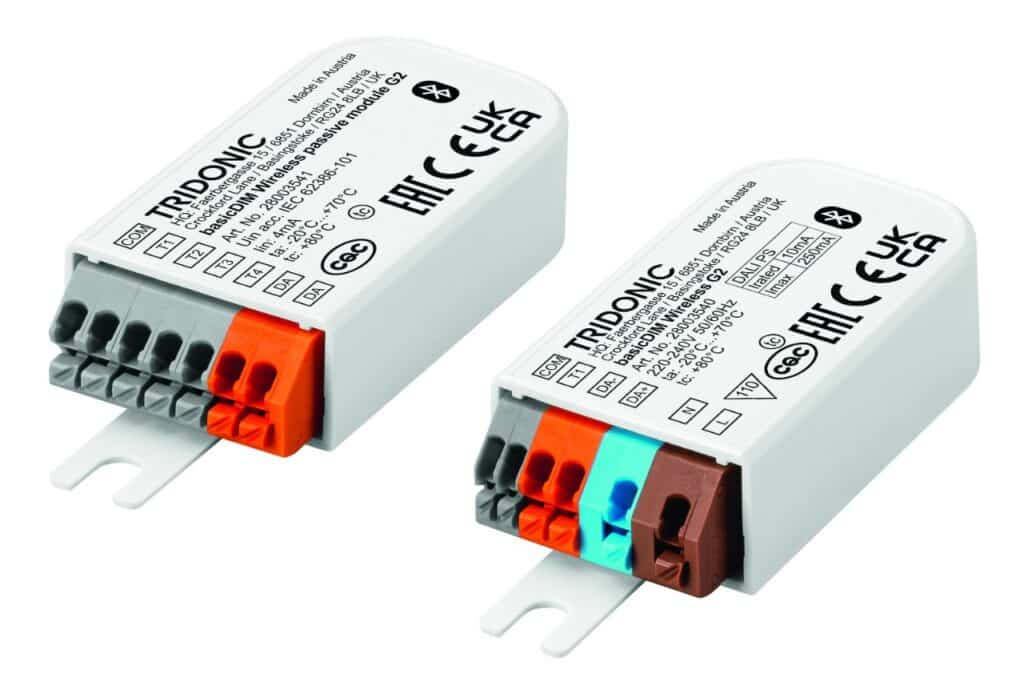
For its new emergency lighting system Tridonic combines its user-friendly Casambi-ready basicDIM Wireless control technology with sceneCOM DALI-based lighting control. Tridonic uses the proven basicDIM Wireless system as the backbone of the new solution, providing wireless connectivity for the emergency luminaires via a fail-safe mesh network without any additional cabling or structural changes. The luminaires are set up via Bluetooth Low Energy (BLE). Existing DALI emergency luminaires with a PRO emergency lighting unit can be easily upgraded and integrated into the wireless network. For this purpose, Tridonic offers the also new, compact basicDIM wireless G2 module.
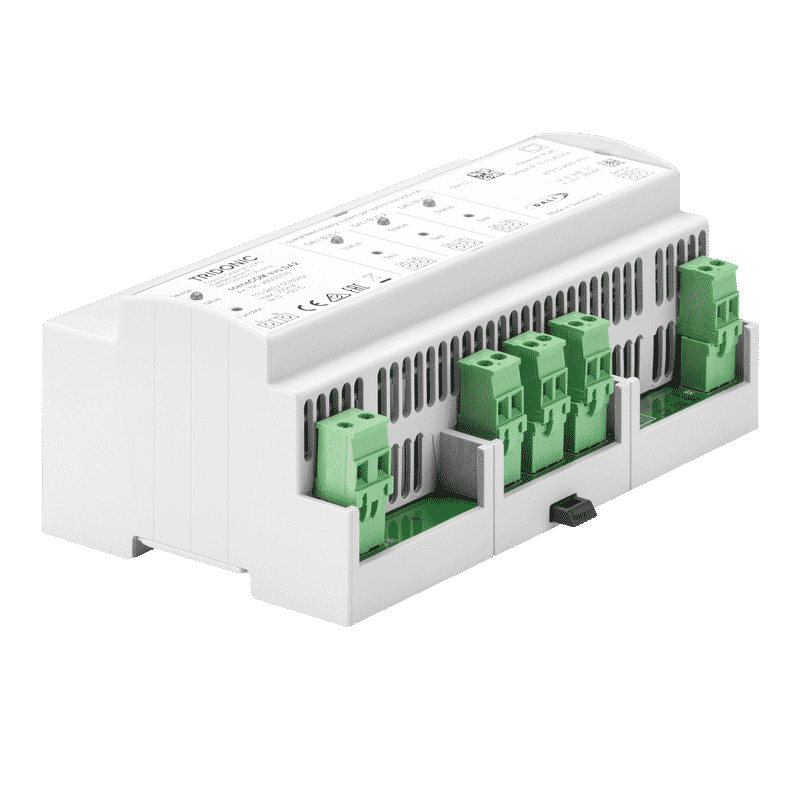
A gateway connects all the wireless emergency luminaires to a sceneCOM evo controller. Once commissioned, the controller acts as the “brain” and takes over command of the entire lighting solution – fully automatic and exactly as the user requires. This also applies to the required central monitoring and automatic testing of emergency and safety lighting systems. Tridonic has developed a control logic that enables the controller to automatically test the individual luminaires integrated in the network and to display the system status in real time. The test and system data is accessed via Ethernet from any web browser. Up to 192 luminaires can be connected to each sceneCOM evo controller.
Automatic testing and log book at the touch of a button
With its wireless emergency lighting system, Tridonic provides building operators and electrical engineers with a simple solution that automatically checks the installation at the prescribed intervals and records the condition of each individual luminaire in the wireless network in real time.
In conventional installations without central monitoring, appropriately qualified personnel must operate each individual emergency luminaire in the building and check it manually. The new Tridonic solution means that the luminaires are now centrally monitored and automatically tested. External access is via a PC, notebook, tablet or other internet-enabled device. The dashboard provides information at a glance about the current state of the system and the latest test results. And with just a few clicks, you can get detailed information about the status of each luminaire in the network. This includes the condition of the battery as well as the status of the LEDs and associated electronics. At the touch of a button, the system also automatically creates a standard-compliant log book with all the relevant information for downloading as a PDF or XML file. If a fault occurs in the lighting system, it can be seen on the dashboard. On request, a software package can inform the asset manager about faults and errors via email.
Thanks to new em-LINK v2 server application from Tridonic, all of these features are also available for large installations with multiple sceneCOM evo controllers, such as all the buildings on a large campus or retail outlets at different locations. It can connect up to 200 sceneCOM evo controllers and therefore as many as 38,400 individual luminaires. A web application makes it easy to select the separate installations and check their status. The building managers are thus spared routine travel to the various buildings or branches; they are only required on site in the event of a malfunction or for replacing individual system components. This greatly reduces the time and resources required, and specialist staff can concentrate on their work without unnecessary travel.
Easy retrofitting, easy planning and automatic testing – with no unnecessary effort or materials
The benefits of the wireless emergency lighting system from Tridonic are self-evident. As no additional cabling is needed, electrical engineers benefit from simplified planning. Only the power supply has to be taken into account. That makes installation easier. Thanks to simple cable routing, very little material is required, and the time needed for the job is manageable. However, the system still complies with all current standards relevant to emergency lighting – even in the case of retrofitting in existing buildings.
The wireless system saves time for the electricians responsible for maintaining the installations. Central automatic testing of separate installations and direct access to the system data reduces the workload enormously. Less time is required to test the individual emergency luminaires and less time is spent in the car travelling from installation to installation. With the aid of the web application, the luminaires can be easily assigned to rooms during or after commissioning and can be named accordingly.
Luminaire manufacturers can easily convert standard emergency luminaires equipped with a PRO emergency lighting unit into wireless emergency luminaires with the new Tridonic basicDIM Wireless G2 module. As a space-saving wireless unit, the Casambi-ready module is ideal for installation in the luminaire. It has an integrated DALI supply so no additional device is required. Firmware updates are available wirelessly on any Android or iOS device.
The relevant components of the wireless emergency lighting system are BSI KitemarkTM certified and comply with all standards and regulations relevant to emergency lighting.
About Tridonic
Tridonic is a world-leading supplier of lighting technology, supporting its customers with intelligent hardware and software and offering the highest level of quality, reliability and energy savings. As a global driver of innovation in the field of lighting-based network technology, Tridonic develops scalable, future-oriented solutions that enable new business models for lighting manufacturers, building managers, systems integrators, planners and many other types of customer.
To promote the vision of the “Internet of Light”, Tridonic relies on partnerships with other specialists. The goal is the joint development of innovative technological solutions that convert lighting systems into intelligent networks and thereby enable associated services. Its profound, technical industry expertise makes Tridonic an ideal partner for established brands and for newcomers to the market.
Tridonic is the technology company of the Zumtobel Group and is headquartered in Dornbirn, Austria. In the 2019/20 fiscal year, Tridonic achieved sales of 341.4 million euros. 1,932 highly skilled employees and a worldwide sales presence in over 50 countries provide the basis for developing and launching new, smart and connected lighting systems.





